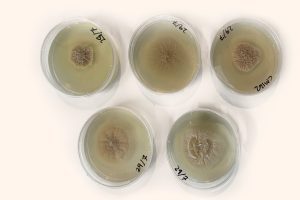What is an endophyte and why does it matter for ryegrass?
May 13, 2025 Australia
Endophytes are naturally occurring fungi that live inside some ryegrass plants. They influence insect tolerance, pasture persistence and production, animal health, and stock performance.
The simple version: how do endophytes work?
Over many years, endophytes and ryegrass plants have evolved together in nature, forming a mutually beneficial relationship. The endophyte moves into the ryegrass seed before harvest, and when the seed germinates, the endophyte grows within the plant for its entire lifespan.
Endophytes produce alkaloid compounds that are distributed throughout the plant. These alkaloids serve various purposes, such as deterring insect pests, reducing damage, and improving the plant’s longevity and productivity. However, some alkaloids can affect the nervous system and blood circulation of animals that consume the plant.

The benefits of endophytes in ryegrass
- Improved pest resistance – Endophyte-enhanced ryegrass can withstand higher insect pressure, reducing plant damage and pasture loss.
- Better pasture persistence – Endophyte-protected ryegrass generally survives longer, making it a better long-term investment for farmers.
- Increased production – Some endophytes improve ryegrass growth rates and yield by reducing pest-related stress.
The more detailed version: choosing the right endophyte
There is a range of endophyte types available. Some are very safe for animals but offer less insect tolerance than standard endophytes. Others provide strong insect tolerance but can still cause ryegrass staggers. More recently, endophytes have been developed that maximise insect tolerance while eliminating negative impacts on animals.
- Standard endophyte (SE): Enhances insect tolerance and pasture persistence but can cause ryegrass staggers and heat stress, reducing animal growth and reproduction.
- Low endophyte (LE) or nil endophyte: Minimises harm to animals but makes pastures more susceptible to insect damage and less persistent in regions where those insects are prevalent.
- Novel endophytes (e.g. CM142): Provide improved insect protection while minimising harmful effects on animals. Farmers should select novel endophytes that best balance insect tolerance with animal safety.
Where do endophytes make the biggest difference?
Endophytes are particularly valuable in regions with high insect pressure or where pasture persistence is a concern. If you farm in an area with frequent pasture pest challenges, choosing an endophyte-enhanced ryegrass can help maintain stronger, more productive pastures for longer.
Finding the right ryegrass for your farm
Choosing the right endophyte depends on your location, livestock type, and pasture management system.
- If insect pressure is high, an endophyte-protected ryegrass will improve pasture resilience.
- If livestock health is the priority, consider novel or low-endophyte options to reduce risks.
Still unsure? Our team is here to help.
Explore our ryegrass varieties to find the best endophyte-protected options for your farm.
Plus! Check out our article on CM142 endophyte to learn how CM142 is changing pasture performance.